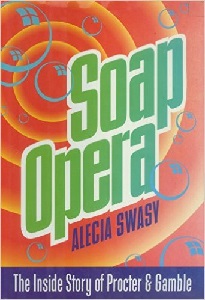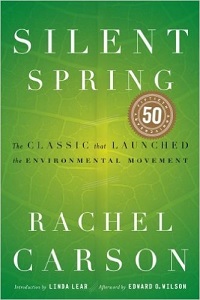
|
|||||
|---|---|---|---|---|---|

|
|||||

Soap Opera : The Inside Story of Procter and Gamble |
Disposablesvs. Cloth Diapers
Pampers® says, To the environment, its six of one, half a dozen of the other.
The disposable
diaper industry is making claims to being BETTER for the environment! They claim the amounts of energy, water and fuel used in the manufacturing, cleaning and pick-up/delivery of cloth diapers are considerably higher than those required for the manufacturing and use of
disposable
diapers.
Setting aside the whole issue and hazards of the solid waste disposable
diapers produce for the moment - let's look at this argument closer . . .
Comparing oranges to apples, they claim cloth diapers use four times more water and produce more sewage for treatment.
First of all, water is a renewable resource . . . trees, natural gas and landfill sites are NOT! Second, I personally would rather spend my tax dollars at our water treatment plants - than to use this money to haul disposable
diapers out to, and maintain, our already overflowing landfill sites.
Disposablestake up to 2-3% of our municipal solid waste and create four times more solid waste than cloth!
lead to a cleaner, healthier world tomorrow and for generations to come.!
Next they claim cloth diapers not only create more water pollution, but use 2 times more energy than manufacturing disposable
diapers. Laundering supplies, water and electricity will add an average of $625.00 during your baby's entire diapering period - about 2 1/2 years.
But these water and energy concerns can be overcome. Use non-phosphate detergents and hydrogen-peroxide bleaches, such as Unbleach® or Green Care® Bleach. Wait until you have a full load of 20-24 diapers to wash, and either purchase quick-drying cloth diapers, or machine-dry for 15-20 minutes. Then hang up to finish drying.

Whitewash - Exposing the Health and Environmental Dangers of Women's Sanitary Products and Disposable Diapers |
disposablediapers create!
As for the two times more air emissions home laundered cloth diapers are claimed to create - I'm afraid I haven't figured that one out yet. Do home washers and dryers cause air pollution? I've never heard this concern before . . . unless they are speaking of fabric softeners. They sure pollute MY air!
But you should not be using fabric softeners - they reduce your diapers absorbency, and can cause allergic reactions in sensitive babies. (I've never used fabric softeners for any of my three children, and my diapers have always been soft and fluffy!)
The only other form of air pollution they could mean is pesticides. Environment Canada states: Some concern has been raised that the use of pesticides (used in cotton growing) would increase with a shift towards cotton diapers. However, even if ALL 'disposable' diapers were replaced with 100% cotton diapers, the impact on the cotton industry would be minimal as cotton diapers would still represent a small fraction of the total cotton market. (Less than 10 kg. of cotton per baby.)
Let's go back to the issue and hazards of the solid waste disposable
diapers produce. Proctor and Gamble, the makers of Pampers®, has announced they have committed $23 million world-wide ($3.5 million in Canada) towards advancing
the benefits of composting and making their diapers fully compostable.
Don't be fooled by this information. EVERY disposable
diaper you use today will STILL go into our landfill sites.
Although they maintain their disposable
diapers are 80% compostable - when folded up into a nice neat bundle (as most parents do), and placed inside a plastic bag, often put into a second plastic garbage bag before being hauled to our landfill site - even a fully biodegradable diapers could never decompose. The first disposable
diapers used back in the early 1970's are STILL sitting in our landfills today - fully intact and brimming with viruses and bacteria.

Silent Spring |
Unless your community has a compostable garbage pick-up service in place TODAY, and YOU separate your disposable
diapers into bags with other organic household garage (food scraps, grass clippings, etc.) - EVERY single disposable
diaper you use will be adding to our growing environmental and landfill problems!
However even if, through a scientifically-controlled process, municipal composting could turn the compostable parts of the diaper
into dirt-like mulch - what further
problems will THIS create???
What will happen to the super-absorbent polyacrylate and other chemicals, used in the process of manufacturing these disposable
diapers? Not to mention the viruses and bacteria. Will they end up in the safe, clean, high-quality compost
? Or, will they use MORE chemicals to clean up the first chemicals?
What will be the long-term effects of growing trees and other produce in soil that used to be dirty, chemically-ridden disposable
diapers?
What about the air, water and energy involvement in the manufacture of this compost
? How much energy will be used - and pollution caused - to pick-up, transport these disposable
diapers to the processing plants to convert them into compost
, and transport this compost
to the end-user?

The Sanitary Protection Scandal |
How much water and air-pollution will this manufacturing process cause? How much MORE solid waste will it produce? What will be done with the non-compostable
parts of the disposable
diapers?
Have they worked out the equivalent of THIS project to using the same cloth diapers for one, two, even three children? A disposable
diaper is used only for a few hours at most, yet lasts hundreds of years in the landfill site. A cloth diaper can be used up to 200 times. When a cloth diaper is no longer useful in the nursery, it makes a fabulous lint-free rag to wash your car, etc. At the dump, a cloth diaper will decompose in about six months.
I am not questioning Proctor and Gamble's continuing commitment
to finding a viable alternative for their disposable
diaper customers. This is a $400 million per year industry, in Canada alone! I'm positive they will do everything in their power to maintain their market share.
BUT, I do take great exception to their using SHELL-GAME TACTICS to confuse the new and expectant parents into continuing to purchase and use disposable
diapers NOW - because in the future they will find a solution
! Will they dig up all the dirty diapers we're using NOW, out of our landfills, and compost them too?!?
This article compliments of Born to Love.
Send questions, comments, and suggestions to: catherine@borntolove.com
Born to Love articles are written by Catherine McDiarmid-Watt
Born to Love is a participant in the Amazon Services LLC Associates Program, an affiliate advertising program designed to provide a means for sites to earn advertising fees.
NOTE: All logos, company names, brands, images, trademarks and other intellectual property are the property of their respective owners.
Born to Love is a participant in the eBay Partner Network, an affiliate advertising program designed to provide a means for sites to earn advertising fees by advertising and linking to eBay.com.
Copyright © 1978 - BorntoLove.com - All Rights Reserved.
Last updated - April 5, 2024